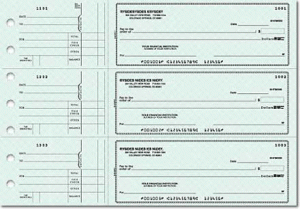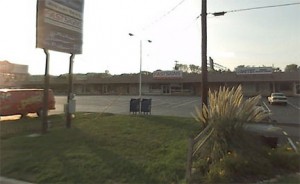Owning the best equipment and providing great service is a great start. But to be successful, customers have to purchase your product. The process of reaching out to and obtaining customers is called marketing. Advertising is part of a marketing program but not the only part. Marketing covers everything from product development to following up on a sale. Developing and implementing a good marketing strategy is an important process for a successful business. This process begins as you start your business, and it must remain an ongoing process throughout the life of your business. To be successful you must work out a good marketing plan !
Marketing your sign shop has to be effective but does not have to be expensive. By properly researching your market you can create a successful marketing strategy with a reasonable budget. There are several steps you must take to create and implement a marketing plan. Some only involve a little time and effort. The steps are as follows:
1. Identify your competition – Research your marketplace and determine what type of competition you have. Pay particular attention to a 2 mile radius around your location. Shops within this area will be your main competition. Determine what each shops capability is and what services they offer. Also, determine what their prices are. (this will help you set your prices) As you do this see if you can identify any gaps in service. Products that customers want but are not available from your competition.
In doing your analysis, include the following steps:
Call around and get rates from other sign shops.
Find out how they advertise.
Check local papers for advertising.
Check the yellow pages.
Check the business section of newspapers for advertising
Ask yourself why would you or wouldn’t you use them if you were a customer.
2. Identify potential customers – At some point everyone needs a sign and theoretically everyone could be considered a potential customer. However, when developing a marketing plan you need to determine who your primary customer is going to be and how you will reach them. This will be based on the type of customer and their location. (focus mainly on customers that are in about a 2 mile radius) This determination will also depend upon the capabilities of your shop and what types of customers you want to attract.
Some examples of customer types would be individuals, real estate companies, small businesses, large companies, government agencies, schools, booster clubs, churches, car dealers, industrial complexes, race car drivers, boat owners, car clubs, etc..
3. Market based on your Specialty – Since you can not effectively specialize in every area of the graphics industry you will have to determine which ones are right for you and your shop given your goals and abilities. For example, if you only have a vinyl cutter then you are not going to be able to service customers who want screen printed signs. Most shops tend to specialize in a certain type or types of signs. For example, some shops do a lot of sandblasted signs while others do laser or mechanical engraving. Others specialize in full color graphics, vehicle graphics, large banners, etc… By specializing in a certain area of your industry you differentiate yourself from your competitors. Decreased competition means increased profit margins. This is also called finding your niche.
4. Prepare your Marketing Materials – At this point you should begin preparing your business cards, flyers, letters of introduction, etc.. You will use these items in varying degrees for all potential customers. Make sure everything is professional as customers will relate the marketing material to the quality of your work.
5. Implement your Marketing Program – When a shop specializes in a particular area they will end up serving two basic groups of customers. A broad group and a targeted group.
The first customer you should try to reach is what I call a broad base customer. This customer base purchases the full spectrum of signs and basically includes everyone. To this group you will sell everything from garage sale signs to window lettering to event banners. Marketing for this group is done using a broad approach such as yellow pages, newspaper ads, google local business ads, signs, banners, cards on bulletin boards, etc.. This is often called the shotgun approach. Using this type of advertising will get you a wide variety of calls and you will have to filter the customers based upon your shops specialties.
The second group is a targeted group. These are either customers that match your shops specialty or customers that you specifically want to target for other reasons. This would be a customer like a racing team that needed graphics for their cars. Or a real estate agent that needed real estate signs. Also in this group would be any large organizations that you specifically want to reach such as hospitals, schools, factories, etc.. To reach these customers you would use a targeted approach which simply involves more direct contact via cold calling or a marketing package. Think of it as a rifle versus a shotgun. Much more targeted.
In summary, a good sign shop will target the types of customers it wants and at the same time utilize broad based advertising to bring in constant general sign work. One is the type of work they want to do and the other is filler work so that the shop is always staying busy.
 In looking for the correct
In looking for the correct 

